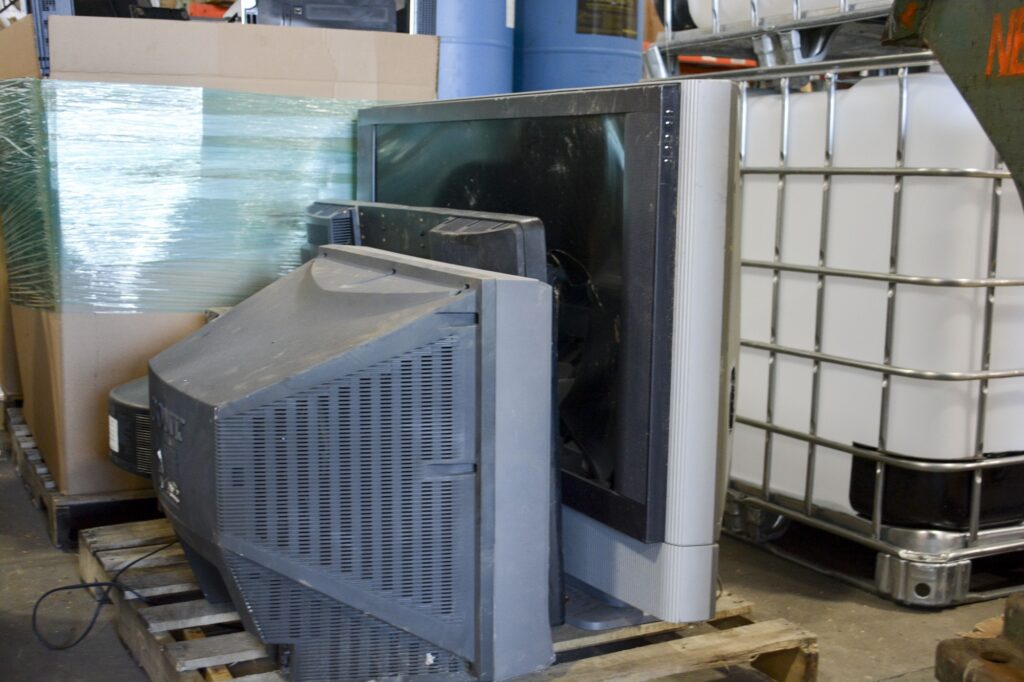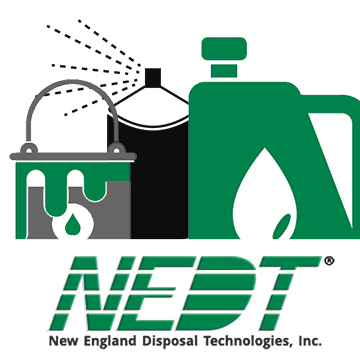Whether a computer monitor is past its prime or a newer flatscreen TV is being replaced in a media center overhaul, unneeded TVs and other electronics can start to pile up. Unlike other household products which can be easily recycled or thrown away, these electronics require specialized tv disposal. But what makes them hazardous household products and is either form of electronic waste (eWaste) more harmful than the other or needs additional care?
Old CRT or “Tube” TVs and Monitors
The classic TV ready for disposal: it seems we’ve all had one gathering dust in an attic, basement, or garage at one point. There are two major issues with Cathode Ray Tube (CRT) monitors and TVs to watch for when handling and disposing of them:
- Electrocution & Explosion: Tube TV hold a lot of voltage, even after being unplugged for short times—the average color TV has 27,000 volts when fully charged. This lethal charge, combined with the fragile vacuum tube means damaging or disassembling the monitor can lease to electrocution and tube implosion (and then explosion).
- Heavy Metals: CRT monitors and TVs can contain anywhere from 2 to 5 pounds of lead per unit! Color CRT may contain mercury – commonly found in many electronics – hazardous if the screen cracks. These metals make disposal in landfill impractical (and banned in MA), as the heavy metals can leak out and damage the environment.
Learn more in our blog, The Dangers of Cathode Ray Tube (CRT) Monitors and Televisions.
LCD, OLED, and Plasma Flatscreen TVs and Monitors
While they come in a staggering amount of sizes, shapes, and compositions, there are two major types of flatscreens. Older plasma screens and newer LCD (Liquid Crystal Display) LED (Light Emitting Diode) TVs. The latter has many different types, including standard LCD LED, QLED, and higher-priced OLED. All these monitors share certain characteristics compared to CRT monitors, though they don’t have the same issues with electrocution and explosion, and therefore can be stored more safely and with less worry of damage.
However, just like with other forms of eWaste, most of these flatscreens (especially before 2009) contain mercury, and all contain other hazardous metals such as lead, beryllium, and cadmium. Learn more about the dangers of mercury in our electronics and lighting hazardous waste post and more about other heavy metals present in eWaste here: eWaste: Why Electronics Shouldn’t Be Thrown in the Trash.
TV Disposal Options
Unable to be thrown away, you should check with your local municipality to see if they have a free eWaste program for recycling TVs. Hauling companies might also dispose of these electronics, especially useful if you’ve got a lot of appliances to take away. If you’re in the Massachusetts area – you’re in luck! NEDT offers disposal options for eWaste through our Household Hazardous Products Collection Centers. Contact us today to learn more, find the location that works for you, or use our pick up service.



Leave a Reply